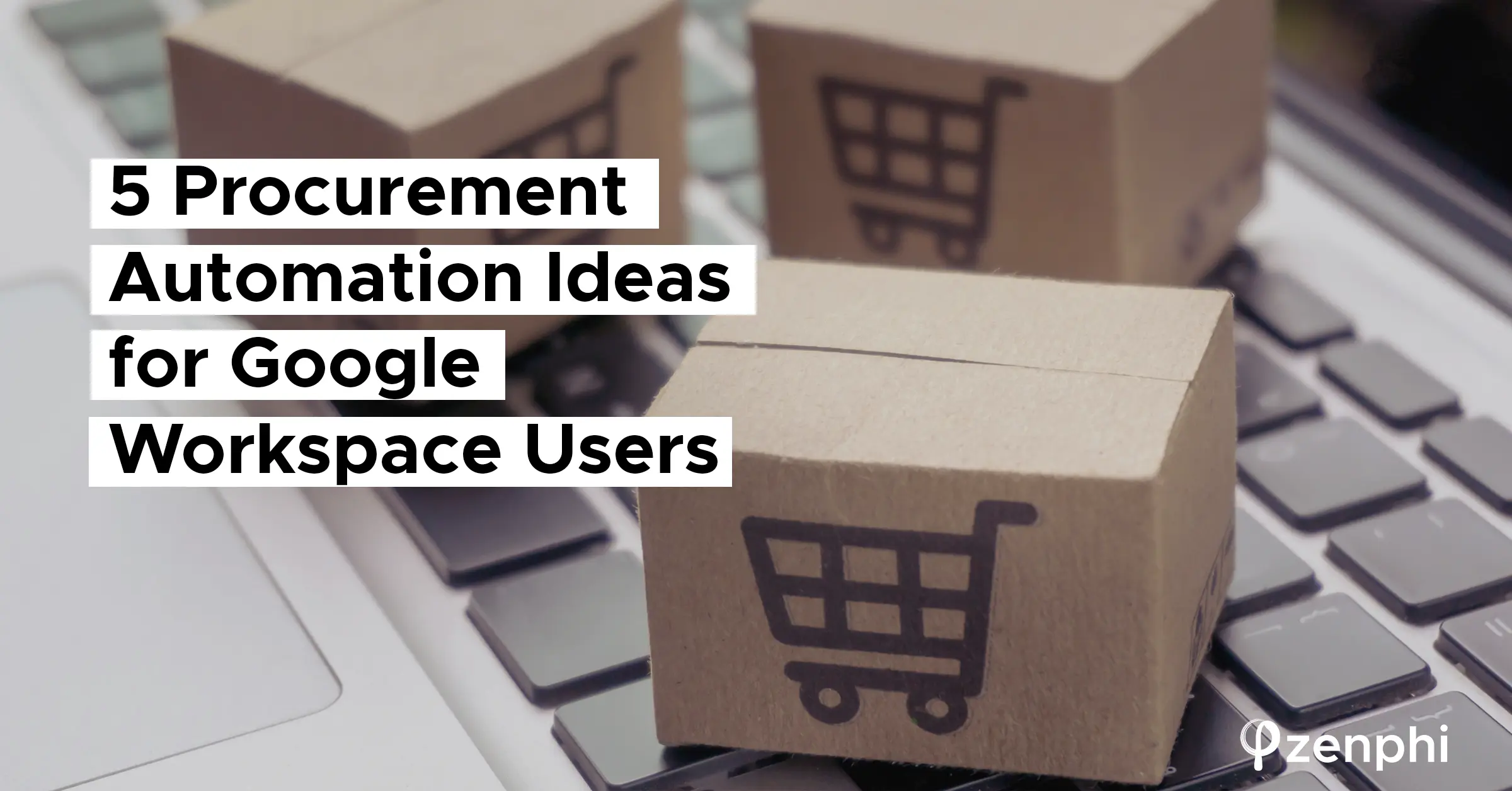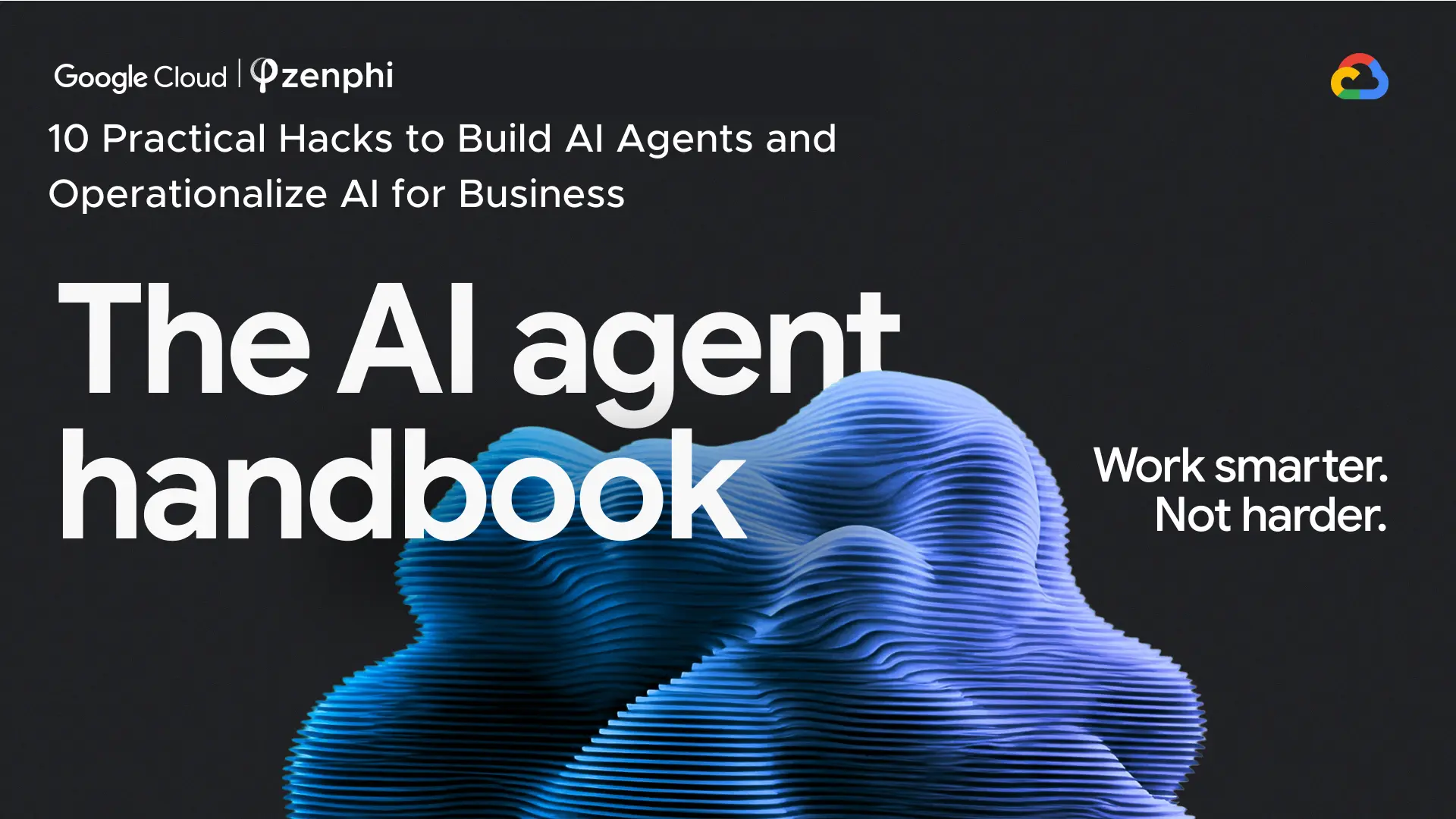Reliable procurement processes are critical to business operations running smoothly, making it important for procurement teams to continually look for ways to enhance their workflows and drive better results. These processes, from purchase order approval to supplier onboarding and contract management, can be complex and time-consuming when handled manually. However, advancements in technology have opened up new avenues for making these processes more efficient and accurate. One of them is no-code process automation – an innovative solution that allows procurement managers to significantly enhance the way they handle these tasks. In this article, we’ll explore five key procurement processes that can be automated using no-code process automation on Google Workspace. These automation ideas will help procurement managers boost productivity, reduce costs, and improve overall performance.

What is Procurement Automation?
Before delving into the specific procurement processes that can be automated, let’s take a moment to understand what procurement automation entails. Procurement automation is the use of technology and software to streamline and optimize various aspects of the procurement process. This can involve automating repetitive and manual tasks, creating efficient workflows, and integrating systems to make procurement more efficient, accurate, and cost-effective.
The Benefits of Procurement Automation
Efficiency and Time Savings
One of the most significant benefits of procurement automation is the efficiency it brings to the entire procurement process. Automated procurement workflows enable organizations to complete tasks faster and with fewer errors. Purchase order approval, for instance, can be expedited, reducing delays and ensuring that orders are fulfilled promptly. This results in improved overall operational efficiency and shorter procurement cycles.
Cost Reduction
By automating procurement processes, organizations can significantly reduce operational costs. Tasks that would otherwise require a substantial amount of manual labor can be handled more efficiently by automated systems. This includes invoice processing, where automation can reduce the need for data entry, leading to lower labor costs. Additionally, automated procurement can help identify cost-saving opportunities, such as optimizing inventory levels to prevent overstocking or stockouts.
Enhanced Accuracy
Manual procurement processes are prone to errors, which can be costly and lead to supply chain disruptions. Automated procurement ensures that data is entered consistently and accurately. In the case of invoice processing, for instance, automation can help match invoices to purchase orders and receipts, reducing the risk of overpayment or duplication.
Transparency and Accountability
Automation introduces transparency and accountability into the procurement process. Workflows can be designed to provide real-time visibility into the status of purchase orders, supplier onboarding, and contract management. This transparency not only helps in tracking progress but also holds stakeholders accountable for their actions. Automated procurement reduces the chances of miscommunication and disputes by ensuring that all parties involved have access to the same information.
Compliance and Risk Management
Automated procurement assists in maintaining compliance with legal and regulatory requirements. In the case of supplier onboarding, for example, automated workflows can enforce document submission and verification, ensuring that suppliers meet all necessary compliance standards. Furthermore, contract management automation helps organizations keep track of contract renewal dates and critical terms, reducing legal and financial risks.
Why Opt for a No-Code Approach In Procurement Automation
1. Faster Time to Market: No-code platforms are usually user-friendly and do not require extensive coding knowledge. This means that you can create automation solutions more quickly and deploy it without lengthy development cycles. Procurement managers can design and implement automated workflows in a fraction of the time it would take with traditional development approaches.
2. Faster ROI (Return on Investment): The quick implementation of no-code automation results in faster returns on investment. Procurement teams can start reaping the benefits of automation sooner, including time savings, cost reduction, and improved accuracy.
3. Anyone in the Team Can Automate: No-code platforms empower individuals within the procurement team, even those without coding experience, to design and implement automation solutions. This democratizes the automation process, allowing a broader range of team members to contribute to workflow improvement.
4. Simplified Change Management: Change management is often a major concern when introducing new technology or processes. No-code automation simplifies this aspect by offering intuitive tools that team members can adapt to more easily. This means that changes to existing workflows or the creation of new automated processes can be implemented with minimal disruption.
5 Processes Every Procurement Team Should Automate
1. Purchase Order Approval
The first process to consider automating is purchase order processing. With procurement automation, you can set up a system that allows purchase requests to be initiated electronically, automatically routed to the appropriate stakeholders for approval, tracked in real-time, and more. This streamlined procure-to-pay automation eliminates manual approval processes, reducing delays and ensuring faster order fulfillment.
For instance, through the integration of a no-code automation solution on Google Workspace, procurement managers can seamlessly collect purchase order requests via Google Forms. These requests can then be effortlessly routed through multiple stages of approval and stock checks. The system can further generate purchase orders in real-time using Google Docs, convert them to PDF format, and transmit them to the respective supplier via email – all with minimal manual intervention. To explore this comprehensive process in detail, please refer to the tutorial below:
Automate Purchase Order Processing with Google Forms and zenphi
2. Supplier Onboarding
Supplier onboarding is a crucial part of procurement that often involves a lot of manual paperwork and communication. Automated procurement can simplify this process by allowing suppliers to submit their information, certifications, and compliance documents electronically. With the help of no-code automation tools, procurement managers can design a structured onboarding workflow that guides suppliers through the necessary steps, such as providing tax forms or insurance certificates.
Automating supplier onboarding not only reduces administrative overhead but also ensures that all necessary documentation is in place, enhancing compliance and risk management.
Learn how you can automate vendor onboarding and other workflows with Google Workspace and Quickbooks integration:
QuickBooks Automation: 5 Scenarios to Transform FinOps
3. Invoice ProcessingUpdated action: Math Operator – Absolute Difference
Manual invoice processing can be a time-consuming and error-prone task. Procurement managers can leverage procurement automation to streamline this process by automatically capturing invoice data, matching it to purchase orders and receipts, and routing it for approval. A no-code process automation tool for Google Workspace like zenphi allows for the creation of intelligent workflows that minimize manual data entry and ensure accurate processing.
By implementing procure-to-pay automation for invoice processing, organizations can reduce the risk of duplicate payments, improve accuracy, and accelerate payment cycles, which can lead to better relationships with suppliers.
Learn what amazing results a purchasing and management company from the US has achieved using no-code process automation for their invoice processing:
Case Study: Boosting Invoice Processing Efficiency by 600% With Automation
4. Contract Management in Procurement Automation
Managing contracts is a critical component of procurement that requires careful attention to detail. Procurement automation can simplify this process by creating a centralized repository for contracts, tracking key dates, and sending automated notifications for renewals or terminations. Moreover, with automation, it’s easier than ever to automatically generate documents without manual data entry as well as extract data from the documents and route further for further analytics or processing.
By automating contract management and other document-centric processes, organizations can reduce legal and financial risks. No more missing important deadlines or overlooking critical contract terms.
5. Inventory Management in Procurement Automation
Effective inventory management is crucial to maintaining an efficient procurement process. Automated procurement can help optimize inventory management by setting up alerts for low stock levels, reorder triggers, and stock tracking.
By automating inventory management, procurement managers can minimize the risk of stock-related issues and ensure that they always have the right items in stock when needed. Eventually, such an approach ultimately leads to cost savings and improved service levels.
How to Start With Procurement Automation
Automated procurement processes not only save time but also improve accuracy, transparency, and compliance. It is a valuable investment that enables procurement managers to focus on more strategic activities while ensuring that their organizations remain competitive. Start automating your procurement workflows with zenphi – the only no-code business process automation platform designed with Google Workspace users in mind.


